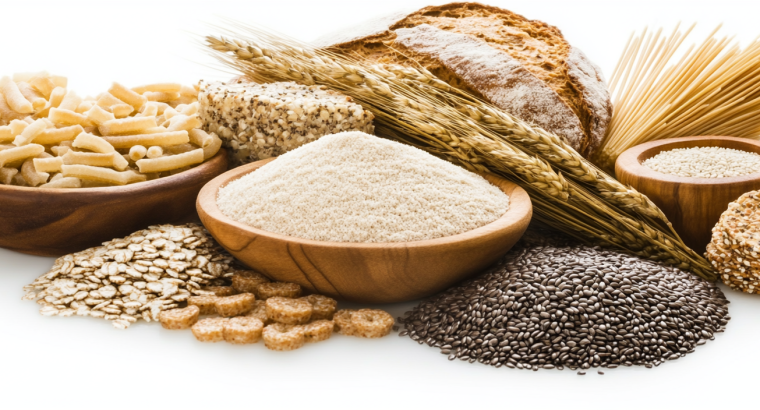The Role of Fiber in a Diabetic Diet
Navigating a diabetic diet can often seem like managing a complex puzzle. Every piece, from carbohydrates to fats, plays a crucial role. Among these dietary components, fiber emerges as a superhero, offering a multitude of benefits specifically tailored to those managing diabetes. Understanding fiber’s role, its types, and how to effectively incorporate it into a diabetic-friendly meal plan can significantly enhance one’s quality of life and health outcomes.
What is Fiber?
Fiber is a type of carbohydrate that the body can’t digest. While most carbohydrates are broken down into sugar molecules, fiber passes through the body undigested. Its presence in our diet is essential because fiber helps regulate the body’s use of sugars, keeping hunger and blood sugar in check.
Fiber can be classified into two main types:
Soluble Fiber
This type of fiber dissolves in water to form a gel-like material. Soluble fiber can help lower blood cholesterol and glucose levels. It is typically found in oats, peas, beans, apples, citrus fruits, carrots, barley, and psyllium.
Insoluble Fiber
Insoluble fiber promotes the movement of material through your digestive system and increases stool bulk, so it can be of benefit to those who struggle with constipation or irregular stools. It is found in foods such as whole-wheat flour, wheat bran, nuts, beans, and vegetables like cauliflower, green beans, and potatoes.
The Importance of Fiber in a Diabetic Diet
Eating sufficient fiber is crucial for everyone, especially for individuals with diabetes. Here’s why fiber holds such importance in a diabetic diet:
1. Blood Sugar Control
Fiber, particularly soluble fiber, can slow the absorption of sugar and help improve blood sugar levels. In people with type 2 diabetes, consuming a diet high in fiber can improve these levels. A diet rich in fibrous foods helps in achieving better glycemic control, reducing insulin spikes and crashes associated with more refined carbohydrate choices.
2. Cholesterol Levels Management
Soluble fiber can lower total blood cholesterol levels by lowering low-density lipoprotein, or “bad,” cholesterol levels. Studies also have shown that high-fiber foods may have other heart-health benefits, such as reducing blood pressure and inflammation, which are particularly beneficial for diabetics.
3. Improving Heart Health
A diet that is high in fiber is linked to a lower risk of cardiovascular disease, which is an essential consideration since individuals with diabetes have a higher risk of heart-related issues. Consistent fiber intake supports a healthy heart by maintaining optimal cholesterol levels and reducing blood pressure.
4. Weight Management
High-fiber foods generally require more chewing time, which gives the body time to register that it’s no longer hungry. Thus, they can help prevent overeating. Also, such foods tend to be more filling and provide longer-lasting energy, which can aid weight management—a vital aspect of diabetes management.
5. Digestive Health
Fiber helps bulk up stools and prevents constipation. Regular movement of the bowels is crucial for overall digestive health and can aid in maintaining the body’s normal metabolic processes.
Sources of Fiber for Diabetic Diets
Incorporating ample fiber into a diet doesn’t need to be complex. Many natural, accessible foods are rich in fiber while supporting diabetes management.
1. Whole Grains
Select whole-grain products such as whole-grain bread, oatmeal, brown rice, and quinoa. These offer a good source of both soluble and insoluble fiber.
2. Fruits
Choose fruits higher in fiber such as apples, pears, bananas, berries, and prunes. While fruit contains sugar, the fiber content helps moderate its breakdown in the bloodstream.
3. Vegetables
Vegetables are crucial. Incorporate a variety of vegetables including carrots, broccoli, and leafy greens such as spinach and kale.
4. Legumes
Beans, lentils, and other legumes are excellent sources of fiber and also provide proteins. They should be a staple in a diabetic-friendly meal plan.
5. Nuts and Seeds
Nuts and seeds like almonds, flaxseeds, and chia seeds are fantastic to boost your fiber intake. Additionally, they provide healthy fats which are beneficial for the heart.
Tips to Increase Fiber Intake in a Diabetic Diet
Incorporating more fiber into one’s diet can be done with a little planning and creativity. Here are some tips for adding more fiber to a diabetic diet:
1. Start the Day with Fiber
Begin with a high-fiber breakfast cereal or oatmeal, or try adding fruit or nuts to yogurt. This sets a great foundation for the day and can balance energy levels.
2. Snack on Fiber-Rich Foods
Carry fiber-rich snacks, like nuts, seeds, or fruit, which can help manage hunger and stave off less healthy choices.
3. Read Food Labels
Look for foods that have a higher fiber content on their nutrition labels. Aim for products that contain at least 3 grams of fiber or more per serving.
4. Add Fiber Gradually
To let your body adjust, increase fiber intake gradually and ensure you’re drinking enough water, as fiber works best when it absorbs water.
5. Experiment with New Recipes
Incorporate legumes into soups, salads, or stir-fries. Use whole grain or legume-based pasta as a more nutritious option.
Possible Concerns
Although fiber is beneficial, sudden increases in intake can lead to digestive discomfort such as bloating or cramping. Therefore, it is crucial to increase fiber gradually and drink plenty of water. Always consult with a healthcare provider before making significant dietary changes, especially for specific conditions like diabetes.
Conclusion
Incorporating fiber into a diabetic diet is not only advantageous but essential for managing the condition effectively. The benefits of a diet high in fiber are multi-fold, impacting things from blood sugar levels and heart health to weight management and digestive health. By consciously choosing high-fiber foods, diabetics can take a proactive step toward nurturing their overall health and well-being. As with all dietary adjustments, individual needs vary, so collaboration with healthcare providers is recommended to tailor a regimen that best supports personal health goals.
Adopting a diabetes-friendly diet rich in fiber is an empowering choice, paving the way for a healthier, more balanced lifestyle.

